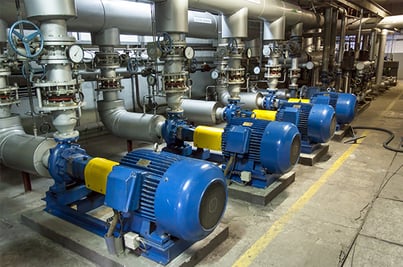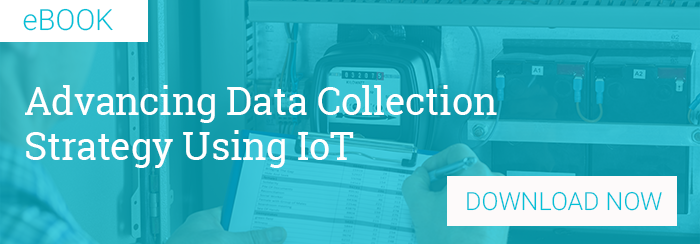Introduction
Runtime generally refers to the period or duration during which a program is executing. In the case of commercial buildings and energy efficiency, runtime is the timeframe during which various energy-consuming sectors of the building are in use. That is from the time they are turned on, to when they are turned off. The main energy consuming areas of a commercial building are heating, ventilating and conditioning, generally referred to as HVAC. This article will focus on the benefits of implementing IoT in to the runtime of commercial building energy consuming sectors.
As far as runtime is concerned, commercial buildings often operate on a runtime strategy. All the energy-consuming units are not usually allowed to run at full capacity all year round. A runtime strategy is a predetermined plan of action on what energy consuming sectors will be allowed to run, for how long, and at what capacity, with the aim of achieving a specific objective. Some of the factors influencing a commercial building's runtime strategy include: occupant energy needs, seasonal fluctuations, objective to be achieved, etc.
Incorporation of IoT in to Runtime Strategy
IoT as discussed in our previous articles is the interconnectivity and exchange of information (communication) between digital devices and people through an IoT platform. Given that the energy-consuming units within a commercial building are predominantly devices – HVAC systems, heat sensors, air conditioners, etc, they are therefore most suitable for the incorporation of IoT in to their runtime.
When merging IoT and runtime, what is most crucial is for the device in question to have at least a sensor and actuator (most devices have these). Sensors are important because they generally gather information with respect to a specific device and its ambient environment, while actuators are executors: responsible for specific actions based on the information gathered transferred by a sensor.
A simple yet classic example in this instance will be an electric kettle. When an electric kettle with water is plugged in to boil, the sensor within the kettle keeps tracks of the water's temperature. As soon as the temperature hits 100 degrees Celsius - the boiling point of water, the sensor within the kettle sends this information to the actuator. The actuator upon receiving the information, triggers a couple of actions that leads to the kettle being automatically turned off.
Benefits of Implementing IoT in to a Commercial Building's Runtime Strategy
Consumption Monitoring
One of the immediate benefits that come with incorporating IoT in to the runtime strategy of a commercial building is the ability to have real time information on the consumption of each energy producing/consuming sector. To be able to plan and achieve effective results with respect to energy efficiency, it is important that the major areas of energy consumption are properly monitored. IoT monitoring goes above and beyond the standard utility company monitoring delivered to commercial buildings in the form of bills at slated intervals. Consumption monitoring and reporting at this level can be broken down to user specific requirements: by day, week, time of the day, etc. This is so because the IoT platform gives the commercial property the ability to customize its information and requirements as necessary.
Rather than waiting on utility companies to provide them with monthly bills, commercial building managers, through the implementation of IoT in to their runtime strategy, can reasonably predict their bills through the establishment of a consumption trend based on IoT monitoring. Commercial properties can therefore better manage their operational budget in anticipation of their reasonably predictable utility bill.
BMS Incorporation
BMS means Building Management System/Software. A lot of commercial buildings these days are actually running on some form of BMS to manage their numerous operations: human resource, finances, assets, etc. Building management systems however have a limitation in that their inputs are a result of manual processes, thereby making them reactive, instead of proactive. Implementing IoT with a commercial buildings runtime strategy will go a long way in making it more proactive, especially with respect to finances. BMS consumption reports could actually be made more powerful through IoT, as they will able to show, as well as integrate real time expenses and analysis.
In case you are wondering, an IoT based runtime strategy can actually be seamlessly combined with most BMS systems. Some systems do allow for IoT integration through plugins, and there are multiple options of third party software in the market, which allows for this kind of integration. The commercial building will therefore have to get an expert in the field to ensure that everything is executed correctly.
Standard for Energy Savings Implementation
Should a commercial building contract a company for an energy savings project, it will need at the end of the energy savings implementation to ascertain that savings were actually made. Based on the calculation of energy savings, data related to consumption before and after the implementation of the energy saving measures is of prime importance for comparison purposes. The best way, through which to obtain the most reliable consumption data is through the implementation of IoT in to the runtime strategy of the commercial building. Sensors in an IoT network ensure that the last drop or kilowatt of utility is measured and stored. Because the entire IoT manner of operation is digital, comparisons and adjustments can be easily made in ascertaining whether or not there has been any energy savings, and the extent of the savings.
Data Collection
Commercial buildings and the world at large are in an age where information is everything. Knowing first, or knowing the most, could mean the difference between profit and loss. An IoT based runtime strategy permits for continuous data collection by the sensors in the concerned areas of consumption. The data collected does not only relate to the consuming nature of each energy sector, but goes as far as the physical state of the energy consuming devices. Building managers can therefore tell before a disaster occurs if a pipe is about to give way, or if a particular device is overheating. Immediate corrective actions can then be taken.
Furthermore, management can use the in depth consumption data from one commercial building to better model and build another commercial structure that will be more energy efficient. The data could as well be sold to users of such information, or added to the public pool of commercial building information, to help better the industry.
Remote Access
This is a principal strength of IoT. It transcends the barrier of space. Most IoT platforms are cloud based, which allows for stakeholders to have access to consumption data, irrespective from where they are in the world. Through the use of a secure login, stakeholders can login and have access to all they need. Another benefit of the remote nature presented by IoT in a runtime strategy, is the ability to take remote actions. Based on the configuration, selected persons can execute desired actions from anywhere around the world through the click of a button. These actions could also be automated based on a variety of environmental factors. For example, the air conditioner could be programmed to automatically go off, once temperatures hit 72 degree Fahrenheit.
Conclusion:
To conclude, IoT is the key to unlocking the energy saving potentials of commercial buildings. Irrespective of the sector of implementation within a commercial building, they are bound to bring about positive results especially when incorporated in the runtime strategy.



